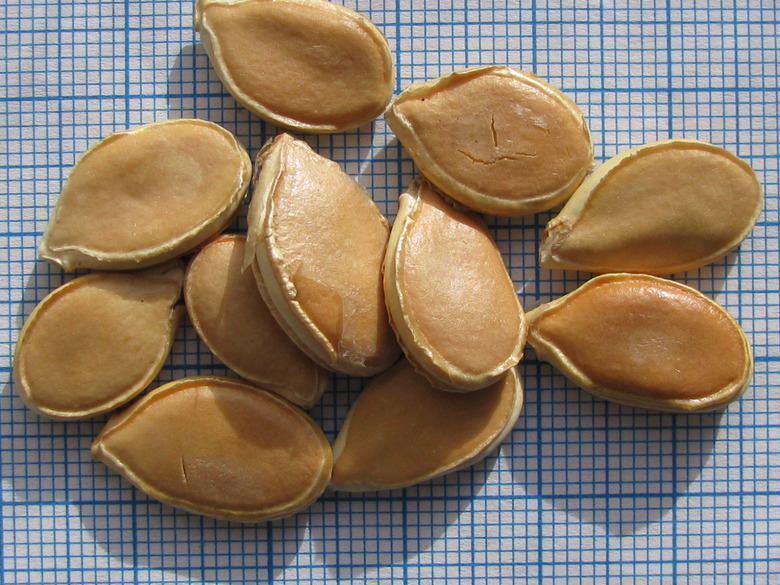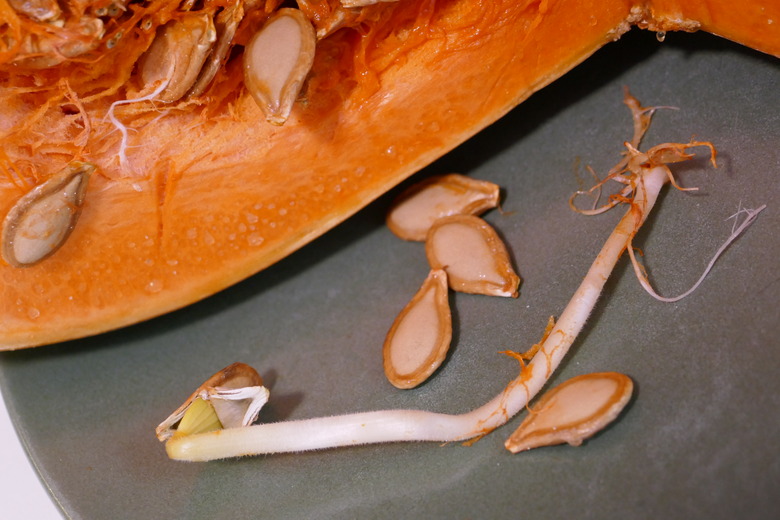How To Germinate Pumpkin Seeds With Water, Salt Water Or Sugar Water
Should You Soak Pumpkin Seeds in Sugar Water or Salt Water?
Soaking can help a pumpkin seed sprout, but only if the right soaking solution is used. Growing pumpkins (Cucurbita maxima) is easy to do, because the seeds are typically eager to sprout, and the plants are low maintenance.
Growers have dozens of pumpkin varieties from which to choose, from miniature pumpkins, such as Jack-Be-Little (Cucurbita maxima 'Jack-Be-Little'), to giant pumpkin types, like Atlantic Giant (Cucurbita maxima 'Atlantic Giant'), all of which grow from seeds.
Fresh pumpkin seeds will germinate without any pretreatment, but older seeds saved from previous seasons may need to be soaked before sowing. Although curious gardeners may try to soak pumpkin seeds in salt- or sugar-based solutions to see if it helps improve germination rates, plain water is always best.
About Soaking Solutions
**Nothing beats plain water when it comes to soaking pumpkins seeds before sowing.** Seeds soak up water in their environment through a process called imbibition, which is an integral part of the germination process.
Older seeds sometimes have a difficult time absorbing moisture from the soil, but soaking them in water before planting will hydrate them and help give them a head start.
**Both sugar and salt have an inhibiting effect on pumpkin seed germination and should not be added to the soaking water.** Sugar will not only inhibit germination but will increase bacterial and fungal growth. Salt can also negatively impact seed germination and seedling growth, particularly in salt-sensitive plants, such as pumpkins.
Soaking Pumpkin Seeds
Soaking pumpkin seeds is very straightforward. Set the seeds in the bottom of a bowl and cover them with room temperature distilled water or rainwater. Soak the seeds for several hours before sowing them. You can drain the seeds on a sheet of paper towel or sow them directly after soaking them.
Another way to enhance pumpkin seed germination is to scarify the seeds. To scarify the seeds, rub the edge of the hull with a piece of fine-grain sandpaper or an emery board. Rub very gently, just enough to thin the edge of the hull without creating a hole. Scarify your seeds before sowing them.
Starting Pumpkin Seeds
The local climate, the cultivar and your desired harvest time all factor into when you should start pumpkin seeds.
Gardeners in areas with a short growing season may need to start pumpkin seeds indoors before the last frost, while those in long-season climates can start the seeds directly outdoors.
Tip
Look at the days to harvest estimate on the seed packet and count backwards that number of days from your desired harvest date to determine when to sow them. For instance, if you want to harvest pumpkins to use as jack-o'-lanterns for Halloween and the estimated days to harvest is 105 days, count back 105 days from October 31. Start the seeds no later than mid-July.
Starting Pumpkin Seeds Indoors
Start pumpkin seeds indoors two to four weeks before the average last frost date if the growing season is short where you live or the pumpkin variety needs a long time to reach maturation.
1. Fill peat pots with moist seed-starting mix or potting soil. Leave the top 1/2 inch of the pots empty. Sow one seed in each pot at a depth of 1 inch. 2. Set the pots on a propagation mat near a bright, sunny window. Program the propagation mat to hold a temperature around 70°F. Cover the pots with a sheet of plastic wrap to hold in heat and warmth. 3. Test the soil every day with your fingertip. Water when it is dry on the surface and slightly damp beneath the surface. Avoid letting the soil become soggy, because the seeds could rot. 4. Watch for sprouts in 5 to 10 days if soil temperatures are 70°F and above. Pumpkin seedlings emerge quickly, so keep a sharp eye on them. Remove the plastic wrap as soon as the seeds germinate to improve air circulation around the seedlings.
Pumpkin seedlings should be grown under bright, warm and airy conditions until after the last frost. Harden the seedlings by exposing them to outdoor conditions for a week or so before transplanting them into the garden.
Starting Pumpkin Seeds Outdoors
Pumpkins often take a long time to reach a harvestable size, so you should only direct-sow the seeds in climates with a long growing season. Choose a growing site for your pumpkin patch that has full sun and well-draining soil.
1. Start the seeds directly in the garden after all danger of frost has passed, and soil temperatures have warmed to above 65°F. Pumpkin seeds need warm soil to germinate, so don't be impatient about planting or your seeds may fail. 2. Prepare the bed a week or two in advance so that the soil has time to settle. Weed the bed and till the soil to loosen it. Spread 2 to 3 inches of compost or aged manure over the bed and work it into the top few inches of soil. 3. Sow pumpkin seeds in rows or in hills. Space rows 6 to 10 feet apart and space hills 4 to 8 feet apart. Space the seeds 6 to 12 inches apart when planting in rows. Plant four to five pumpkin seeds per hill. Plant pumpkin seeds at a depth of 1 inch. 4. Keep the soil moist and watch for seedlings in 5 to 10 days. Thin the seedlings once they reach 2 to 3 inches in height. In a row, thin the seedlings to one every 18 to 36 inches. Thin seedlings in hills by half, leaving just two to three.
Tip
A 2-inch layer of mulch spread between the pumpkin plants will reduce the need for watering.
References
- University of California Santa Barbara ScienceLine: Is There Any Evidence That Low Concentrations (0.001%-1%) Of A Sugar Source On A Growth Medium Might Enhance Seed Growth, Rather Than Inhibit It?
- South Dakota State University Extension: Salt/Salinity Tolerance of Common Horticulture Crops in South Dakota
- Michigan State University Extension: Old-Timer Gardening Secrets
- Cornell University Home Gardening: Pumpkins

